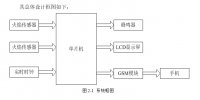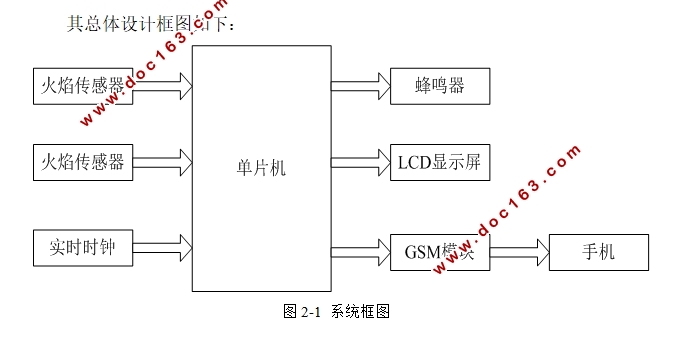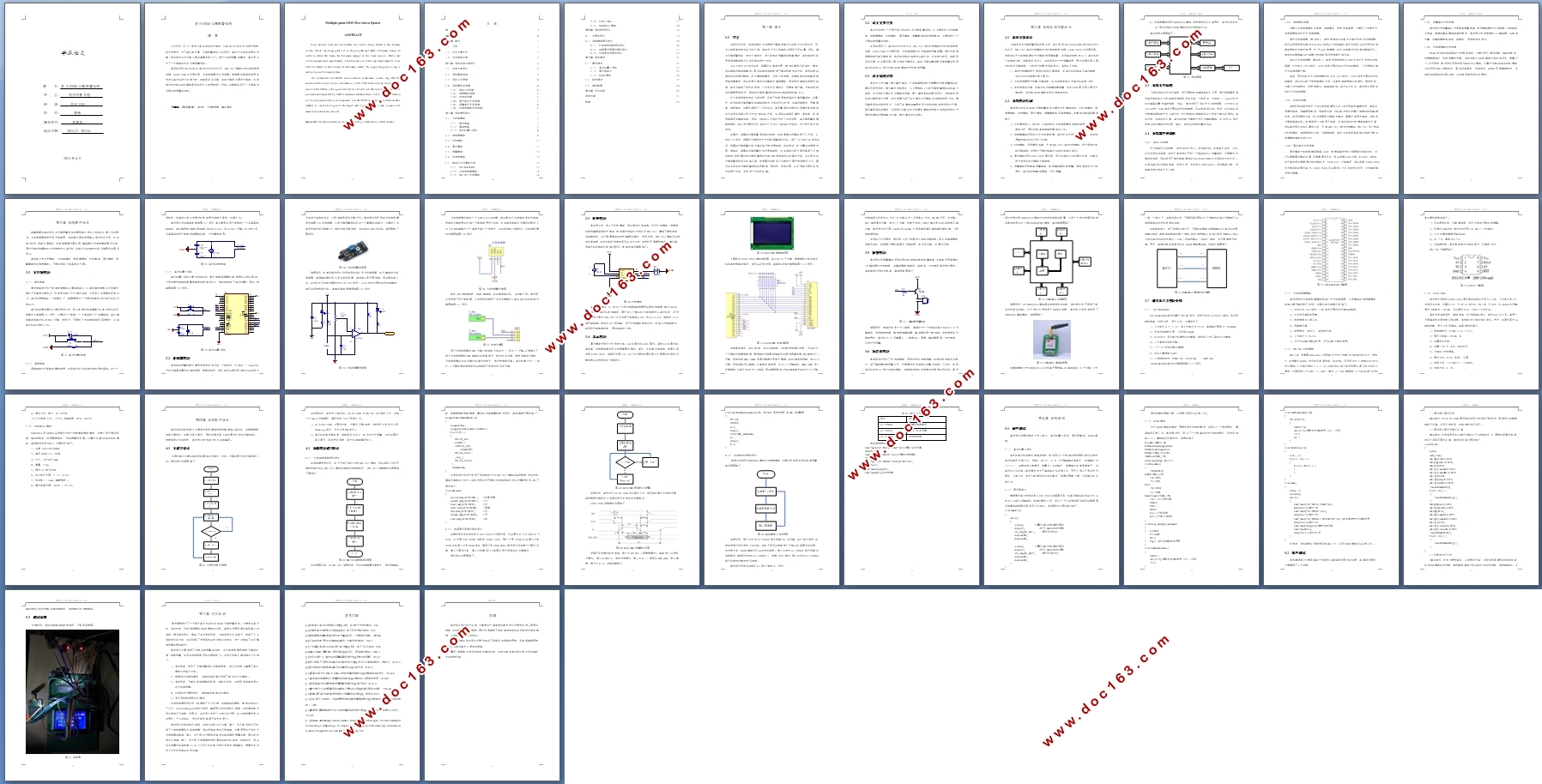多点GSM火情报警系统设计

多点GSM火情报警系统设计(任务书,开题报告,外文翻译,论文10600字)
摘 要
从古至今,火灾一直是人类社会的巨大威胁,它能给人们的安全与财产带来巨大的损失。为了减少其危害,火情报警系统应运而生。其经过多年的发展与改善,现已成为应对火情灾害的重要手段之一。基于“自动报警”的概念,本文设计出了一个简单的多点火情报警系统。
本系统采用SST89E58单片机作为主控芯片,DS1302模块作为时间信息提供源,LCD12864作为显示屏,火焰传感器作为探测器。传感器获取到的信号将被送入单片机进行处理分析,判断是否有火情,并将火情状况显示于本地,且由单片机控制GSM模块是否发送火灾信号给用户手机。这样就实现了一个简单的火情自动报警的功能。
关键词:火情报警系统 单片机 火焰传感器 GSM模块
Multiple-point GSM Fire Alarm System
ABSTRACT
Since ancient times, the fire disaster has been a huge threat to the human society, which can bring great loss to the property and safety of human beings. In order to reduce the harm, the fire alarm emerges as the times require. After years of development and improvement, it has become one of the important means to deal with fire. Based on the concept of "automatic alarm", this paper designed a simple multiple-point fire alarm system.
[版权所有:http://DOC163.com]
The system uses SST89E58 microcontroller as the main control chip, DS1302 module as the source of time information, LCD12864 as the display screen, flame sensor as the detector, the signal received will be sent into the microcontroller and be processed and analyzed by SCM to determine whether there is a fire, and the situation will be displayed on the local equipment. Also the SCM will control the GSM module weather to send a fire signal to the target mobile phone. In this way, a simple fire alarm system has been realized.
Keywords: fire alarm system; microcontroller chips; flame sensor; GSM module
[来源:http://Doc163.com]


目 录
摘 要 I
ABSTRACT II
第一章 绪论 1
1.1 引言 1
1.2 论文主要任务 2
1.3 论文结构安排 2
第二章 系统总体方案设计 3
2.1 总体方案设计 3
2.2 系统模块组成 3
2.3 系统工作原理 4
2.4 系统器件的选择 4
2.4.1 MCU的选择 4 [资料来源:http://www.doc163.com]
2.4.2 传感器的选择 5
2.4.3 时钟的选择 5
2.4.4 显示单元元件选择 5
2.4.5 报警单元元件选择 6
2.4.6 短消息模块元件选择 6
第三章 系统硬件设计 7
3.1 主控制模块 7
3.1.1 复位电路 7
3.1.2 晶振电路 7
3.1.3 单片机最小系统 8
3.2 传感器模块 8
3.3 时钟模块 11
3.4 显示模块 11
3.5 报警模块 13
3.6 短消息模块 13
3.7 相关芯片及模块介绍 15
3.7.1 SST89E58RD 15
3.7.2 火焰传感器模块 16
3.7.3 DS1302时钟模块 16
3.7.4 LCD12864 17
3.7.5 SIM900A模块 18 [版权所有:http://DOC163.com]
第四章 系统软件设计 19
4.1 主程序设计 19
4.2 功能模块程序设计 20
4.2.1 时间信息读取程序设计 20
4.2.2 液晶显示屏显示程序设计 21
4.2.3 短消息发送程序设计 23
第五章 系统调试 25
5.1 硬件调试 25
5.1.1 单片机最小系统 25
5.1.2 显示屏部分 25
5.1.3 GSM模块 26
5.2 软件调试 27
5.3 调试结果 29
第六章 论文总结 30
参考文献 31
致谢 32
[来源:http://Doc163.com]
